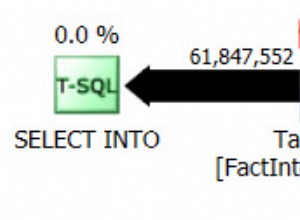Pomysł jest podobny do tego
. Możesz utworzyć dwie dodatkowe kolumny za pomocą pmin pmax grupować w następujący sposób:
data.table rozwiązanie. Ale jeśli nie chcesz data.table, nadal możesz skorzystać z tego pomysłu. Jednak jest bardzo mało prawdopodobne, że uzyskasz szybsze rozwiązanie niż data.table za pomocą samego kodu R.
# assuming your data.frame is DF
require(data.table)
DT <- data.table(DF)
# get min of V1,V2 on one column and max on other (for grouping)
DT[, `:=`(id1=pmin(V1, V2), id2=pmax(V1, V2))]
# get max of V3
DT.OUT <- DT[, .SD[which.max(V3), ], by=list(id1, id2)]
# remove the id1 and id2 columns
DT.OUT[, c("id1", "id2") := NULL]
# V1 V2 V3
# 1: 2 1 666
# 2: 100 102 23131
# 3: 10 19 124444
# 4: 10 15 1244
# 5: 100 110 23




